This article was co-authored by Pouya Shafipour, MD, MS. Dr. Pouya Shafipour is a Family Medicine Specialist, Primary Care Physician, and a Weight Loss Specialist based in Santa Monica, California. Dr. Shafipour specializes in dietary, nutritional, behavioral, and exercise counseling to manage obesity and medical conditions related to excessive weight gain or loss. Dr. Shafipour received a BS in Molecular and Cell Biology from the University of California, Berkeley, an MS in Physiology and Biophysics from Georgetown University, and an MD from the Loma Linda University School of Medicine. He completed his internship in general surgery at UC Irvine and a residency in family medicine at the University of California, Los Angeles, and became board certified in family medicine in 2008.
There are 19 references cited in this article, which can be found at the bottom of the page.
wikiHow marks an article as reader-approved once it receives enough positive feedback. In this case, 81% of readers who voted found the article helpful, earning it our reader-approved status.
This article has been viewed 2,109,661 times.
Did you know that you can eat good food and lose weight? It probably sounds too good to be true, right? Changing what and how you eat will improve your overall health, help you lose weight, and make you feel better everyday. Throw in some exercise to really maximize the benefits!
Steps
Eating the Right Food
-
1Eat several servings of fresh fruits and vegetables throughout the day. Choose fresh, nutrient-rich, healthy, low-fat foods. Fruits and vegetables are filling without lots of empty calories, so you'll be able to eat enough to feel full without taking in too many calories, making weight loss easier.[1]
- Adding a lot of vegetables and fruits to your diet will help you. One way to add more fruits and veggies to your diet, cut calories, and still enjoy the foods you love is to add or "hide" veggies to dishes. Researchers have found that adding pureed vegetables to dishes (e.g., cauliflower to mac and cheese) helped people eat a few hundred calories less of the dishes.[2] Veggies add but bulk to a dish but not really a ton of extra calories.
- Get a lot of color on your plate. Make sure your meals have lots of colors; the best way to do this is by adding lots of fresh produce, from eggplant to beets to kale to yellow peppers. This color blocking usually helps you eat more produce and makes the meal look appetizing and appealing at the same time![3]
-
2Eat foods high in fiber. Fiber-rich foods keep you full for longer, so that you don't reach for unhealthy snacks that will only make you gain weight.[4]
- Beans, for example, are filling, high in fiber and are an excellent source of protein. They're also slow to digest, meaning that you feel satisfied for a while (which may in turn stop you from eating more!)[5]
Advertisement -
3Skip the juices, eat the fruit. Instead of drinking juices or smoothies, which tend to be high in calories, opt instead to eat a whole piece of fruit, like an apple.[6]
- Eating a whole piece of fruit fills you up more than juice because raw fruit has more fiber. In addition, the act of chewing the fruit communicates to the brain that you've eaten something substantial.
-
4Eat foods that contain a lot of water, like fruits and vegetables. Studies have shown that people who eat foods with high water content have lower body mass indexes. The water in these foods helps keep you full for longer so you eat less overall.
- Watermelon and strawberries have about 92 percent water per volume. Other fruits with high water content include grapefruit, cantaloupe, and peaches.[7] Remember, though, that many fruits are high in sugar, so try to limit how much fruit you eat daily.
- For vegetables, cucumber and lettuce have the highest water content at 96 percent. Zucchini, radish and celery have a water content of 95 percent.[8]
-
5Include foods that improve your metabolism. By choosing your foods carefully, you can drop the pounds without going hungry. Hot peppers, green tea, berries, and whole grains are all foods that improve your metabolism, meaning the rate your body burns calories.[9]
- Avoid processed foods and sugars. These cause an insulin spike, which can result in fat storage instead of fat burning.[10]
-
6Add good fats to your diet. Monounsaturated fats have been clinically proven to help you burn fat, especially in your midsection. So, add foods like avocados, kalamata olives, olive oil, almonds, walnuts, and flaxseed to your diet, and watch the weight fall right off you.[11]
-
7Eat superfoods. Superfood is a term sometimes used to describe food with high nutrient content that some believe confers health benefits as a result. Some superfood claims are supported with scientific evidence, while other claims make some foods hugely popular even though they have few proven benefits.[12]
- Quinoa, for example, is a legitimate superfood because it is a complete protein (meaning it has all eight of the essential amino acids we need for our tissues). In addition, quinoa has more protein than most cereal grains and is higher in calcium, phosphorus, magnesium, potassium, and iron than other grains like wheat and barley.[13]
- Just make sure to do your research before deciding on adding certain alleged "superfoods" to your diet.
-
8Avoid unhealthy food with empty calories. "Empty calorie" foods are those which have calories (from sugar and/or solid fats) but little to no nutritional value.[14]
- Foods and beverages that provide the greatest number of empty calories for Americans include cakes, cookies, pastries and donuts, sodas, energy drinks, fruit drinks, cheese, pizza, ice cream, bacon, hot dogs and sausages. With some of these, you can find alternative versions. For example, you can purchase low-fat hot dogs and low-fat cheese at grocery stores. You can also have sugar-free drinks. In other foods, like candy and regular soda, all the calories are basically empty.[15]
- It's okay to have small amounts of "unhealthy" foods as a reward. In fact, doing so can help keep you on a diet! But make sure you're only giving yourself small amounts rather than binging on them.[16]
-
9Eat more soups. Soups are relatively low in calories. Moreover, if you start with a soup, you will probably eat less of the main meal.
- Stick to soups with a broth base and of around 100-150 calories per serving. You can choose either chunky or pureed soups, just avoid soups with added cream.
-
10Feed your temptations once in a while. Go ahead and have the odd doughnut or slice of pizza. Indulging in occasional craving will help ward off any binging episodes. If you really feel a hankering for something, have just a little bit. Remember that the more you restrict yourself, the greater the draw to the restricted item.[17]
- Try eating a bowl of raw veggies or drinking a full glass of water before you indulge. Doing this will fill you up and leave you with less room to overindulge on your treat.
Eating the Right Way
-
1Eat slowly. Your brain takes around 20 minutes to register feelings of fullness, suggesting that you need to slow down so that your brain can properly communicate those feelings.[18]
- If you don't feel full immediately after a meal, wait. The chemicals your brain releases when you eat or drink take time to rise and to communicate that sense of fullness. As the chemicals increase, your hunger dissipates; this is why you should pause for a little bit after eating and before having a second helping.
-
2Use utensils and sit at a table when eating. Eating with your hands will mean that you take in more food in one scoop.
- Studies also show that people who eat with larger utensils eat less than those who eat with smaller utensils.[19]
-
3Stop eating when you feel full. When you feel comfortably satiated after eating, stop and put your utensils and napkin on the plate to signal that you're finished. This is also a signal to yourself that you're done with your meal as well as to those around you.[20]
- Remember, you don't have to eat all of your meal once you feel satisfied. Eat until you are 80% full. No one should feel stuffed and sick after eating.
-
4Drink more water. Often we mistake thirst for hunger which means we eat when it's not necessary. By keeping yourself well hydrated you'll feel hungry less as well as getting a clearer complexion and shinier hair.[21]
- If you're not sure what you're feeling is actually hunger, try drinking a big glass of water and then wait a few minutes. If you don't feel hungry anymore, it's because your body was actually in need of water, not food.
-
5Record what you eat. This is a simple yet very powerful exercise to open your eyes to see whether you are keeping up with your food plan. Often, we tend to overlook the snacking we do between meals and instead really think that our diet is failing us. Most people underestimate their daily intake by about 25 percent.
- You might also discover useful information about your daily habits and a reality check about how many calories you actually consume. Once you know your habits and patterns better, you can begin to address problem behaviors that are hindering your progress.
- Keeping a journal also makes you more accountable.
-
6Learn how to manage eating out. Eating in restaurants or at other people's homes can be a real challenge. You want to eat, but you also don't want to eat the wrong things and risk backtracking on your progress.[22]
- Choose foods that are steamed, grilled, broiled or baked instead of fried. Avoid dishes that are labeled as "breaded", "crispy" or "battered" – these are code words for "fried".
- Don't be afraid to ask for modifications. For example, ask to swap out potatoes or bread for a side salad. Request sauce on the side of chicken or other entrée, rather than smothered on top. This will enable you to still eat something delicious but without all of the extra calories.
- If the restaurant is known for especially large portion sizes, opt to split something with a friend.
- To avoid overeating when going out, eat a small and healthy snack at home beforehand. Try some carrots and hummus or an apple.This will curb off your hunger and keep your head clear while you make healthy and informed choices from the restaurant's offerings.
- Pack away food. At the beginning of the meal, ask for a doggie bag, and put what you aren't going to eat in the bag.
- When ordering salads, always ask for dressings and sauces on the side. Lots of dressings can be very fatty and full of calories. Your seemingly "healthy choice" can pack as many calories as a burger if it’s swimming in a fatty dressing. Be also wary of other high-calorie additions like bacon bits and cheese.
-
7Expect to cheat once in a while. You might overeat one night. You might have a bad day where you indulge in way too much junk food. Just don't despair when you realize you've strayed from your goals. It took you a lifetime to achieve your current weight, and it will take time to achieve your new weight and size goal.[23]
- To keep up your optimism, reward yourself for meeting smaller goals. For example, buy yourself a small token or treat every time you lose another five times. The prospect of the reward will eventually become its own form of motivation.
Expert Q&A
Did you know you can get expert answers for this article?
Unlock expert answers by supporting wikiHow
-
QuestionCan you eat cheese when trying to lose weight?
 Find BC DietitiansFind BC Dietitians is a central hub of qualified nutrition experts in British Columbia, Canada with a mission to connect people to a registered dietitian best suited for their needs. BC Dietitians offer online consultations and provide evidence-based care on a wide range of nutrition matters such as diabetes, weight management, food allergies, eating disorders, and intuitive eating.
Find BC DietitiansFind BC Dietitians is a central hub of qualified nutrition experts in British Columbia, Canada with a mission to connect people to a registered dietitian best suited for their needs. BC Dietitians offer online consultations and provide evidence-based care on a wide range of nutrition matters such as diabetes, weight management, food allergies, eating disorders, and intuitive eating.
Registered Dietitians Group Yes! Use cheese as a way to balance a low protein, low-fat meal. Choose a strong or interesting flavour of cheese and combine with something plainer,like blue cheese dressing on a pear and arugula salad. Use cheese sparingly, and make it the feature of your snack or meal. Ditch the hidden layers of cheese inside a lasagna or sandwich.
Yes! Use cheese as a way to balance a low protein, low-fat meal. Choose a strong or interesting flavour of cheese and combine with something plainer,like blue cheese dressing on a pear and arugula salad. Use cheese sparingly, and make it the feature of your snack or meal. Ditch the hidden layers of cheese inside a lasagna or sandwich. -
QuestionIs the keto diet good if you want to lose weight?
 Dee DineDee Dine is a Nutrition and Vegan Food Specialist and the founder of Green Smoothie Gourmet, a blog dedicated to healthy, plant-based vegan, limited ingredient recipes. Dee holds a BS in Biology/Biochemistry with an emphasis in Immunology. Dee has written two books full of healthy plant-based recipes, including chocolate desserts, snacks, juices and, wellness shots. They are: "Crazy Healthy with 4 Ingredients: Dessert, Breakfast & Snack Vegan Recipes" and "4-Ingredient Smoothies and Juices: 100 Easy Nutritious Recipes for Lifelong Health". Dee is an editor with TheFeedFeed, a crowdsourced digital cooking publication, and has been featured on BuzzFeed, Marie Claire, the Academy of Culinary Nutrition, Well + Good, and Hello Glow.
Dee DineDee Dine is a Nutrition and Vegan Food Specialist and the founder of Green Smoothie Gourmet, a blog dedicated to healthy, plant-based vegan, limited ingredient recipes. Dee holds a BS in Biology/Biochemistry with an emphasis in Immunology. Dee has written two books full of healthy plant-based recipes, including chocolate desserts, snacks, juices and, wellness shots. They are: "Crazy Healthy with 4 Ingredients: Dessert, Breakfast & Snack Vegan Recipes" and "4-Ingredient Smoothies and Juices: 100 Easy Nutritious Recipes for Lifelong Health". Dee is an editor with TheFeedFeed, a crowdsourced digital cooking publication, and has been featured on BuzzFeed, Marie Claire, the Academy of Culinary Nutrition, Well + Good, and Hello Glow.
Nutrition & Vegan Food Specialist When you eat a ketogenic diet, your body burns more energy from fat as opposed to glucose, which is sugar. So eating a ketogenic diet that's high in healthy fats, such as avocados, olive oil, almonds, is going to create ketones in the body that will help you burn energy, calories and weight. Just keep in mind that the act of moving your body into the keto state can have unhealthy consequences, so you should be monitored by doctor.
When you eat a ketogenic diet, your body burns more energy from fat as opposed to glucose, which is sugar. So eating a ketogenic diet that's high in healthy fats, such as avocados, olive oil, almonds, is going to create ketones in the body that will help you burn energy, calories and weight. Just keep in mind that the act of moving your body into the keto state can have unhealthy consequences, so you should be monitored by doctor. -
QuestionAre dates good for you? I've been eating them instead of sweets and chocolate and they make me full.
 Patricia Somers, RD, PhDPatricia Somers is a Registered Dietitian and an Associate Professor of the Department of Educational Leadership and Policy at the University of Texas at Austin. She received her RD from the Academy of Nutrition and Dietetics in 1979 and her PhD in Educational Administration (Higher Education Specialization) from the University of New Orleans. She received an Emerging Scholar Award from the American Association of University Women and the Faculty Excellence Award in Research from the University of Arkansas, Little Rock.
Patricia Somers, RD, PhDPatricia Somers is a Registered Dietitian and an Associate Professor of the Department of Educational Leadership and Policy at the University of Texas at Austin. She received her RD from the Academy of Nutrition and Dietetics in 1979 and her PhD in Educational Administration (Higher Education Specialization) from the University of New Orleans. She received an Emerging Scholar Award from the American Association of University Women and the Faculty Excellence Award in Research from the University of Arkansas, Little Rock.
Registered Dietitian
Warnings
- If you need to lose more than 10% of your body weight, consult with your primary-care physician before beginning any weight loss plan.⧼thumbs_response⧽
-
⧼thumbs_response⧽
References
- ↑ Pouya Shafipour, MD, MS. Board Certified Family Medicine Specialist. Expert Interview. 24 April 2020.
- ↑ https://www.nbcnews.com/id/wbna41892322
- ↑ https://www.bonappetit.com/trends/article/meet-the-color-diet-our-easy-rule-for-healthier-meals
- ↑ Lyssandra Guerra. Certified Nutrition & Wellness Consultant. Expert Interview. 3 March 2020.
- ↑ https://www.helpguide.org/articles/healthy-eating/high-fiber-foods.htm
- ↑ https://www.cdc.gov/healthyweight/healthy_eating/fruits_vegetables.html
- ↑ https://www.myfooddata.com/articles/fruits-high-in-water.php
- ↑ https://www.myfooddata.com/articles/vegetables-high-in-water.php
- ↑ https://medlineplus.gov/ency/patientinstructions/000893.htm
- ↑ Lyssandra Guerra. Certified Nutrition & Wellness Consultant. Expert Interview. 3 March 2020.
- ↑ https://medlineplus.gov/ency/patientinstructions/000785.htm
- ↑ https://www.health.harvard.edu/blog/10-superfoods-to-boost-a-healthy-diet-2018082914463
- ↑ https://www.fao.org/quinoa-2013/what-is-quinoa/nutritional-value/en/?no_mobile=1
- ↑ Pouya Shafipour, MD, MS. Board Certified Family Medicine Specialist. Expert Interview. 24 April 2020.
- ↑ https://www.med.umich.edu/1libr/Mhealthy/WhatAreEmptyCalories.pdf
- ↑ Pouya Shafipour, MD, MS. Board Certified Family Medicine Specialist. Expert Interview. 24 April 2020.
- ↑ https://health.clevelandclinic.org/do-cheat-meals-help-or-hurt-your-diet/
- ↑ https://www.health.harvard.edu/blog/why-eating-slowly-may-help-you-feel-full-faster-20101019605
- ↑ https://economix.blogs.nytimes.com/2011/07/16/use-a-bigger-fork-and-youll-eat-less/
- ↑ https://health.clevelandclinic.org/dont-eat-until-youre-full-instead-mind-your-hara-hachi-bu-point/
- ↑ https://www.cdc.gov/healthyweight/healthy_eating/water-and-healthier-drinks.html
- ↑ https://www.heart.org/en/healthy-living/healthy-eating/eat-smart/nutrition-basics/dining-out-doesnt-mean-ditch-your-diet
- ↑ https://health.clevelandclinic.org/do-cheat-meals-help-or-hurt-your-diet/
- ↑ Pouya Shafipour, MD, MS. Board Certified Family Medicine Specialist. Expert Interview. 24 April 2020.
About This Article
If you want to lose weight and still eat the foods you enjoy, make sure you’re eating lots of fresh food that’s high in fiber, like fruits, vegetables, and beans. Instead of unhealthy high-calorie foods, add good fats to your diet from avocados, nuts, and olive oil, which will keep you feeling full. Try to eat your meals slowly while sitting down at a table and using utensils, since these habits have been shown to help you eat less. If you feel hungry between meals, drink some water before grabbing a snack, because thirst is often mistaken for hunger. To learn more from our Dietitian co-author, like how to track the food you eat, keep reading the article!
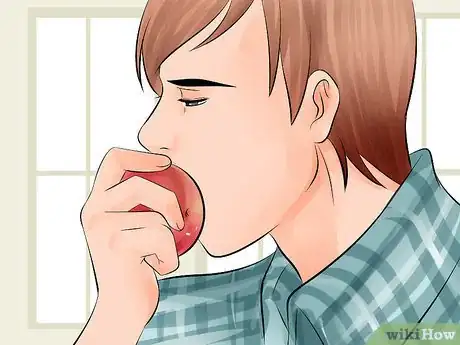

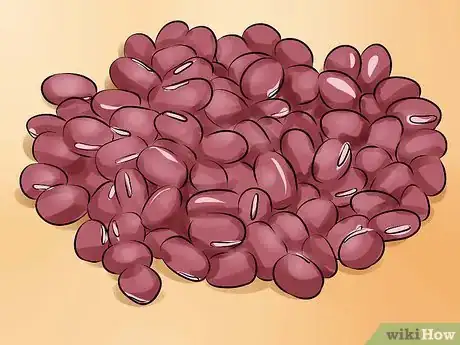

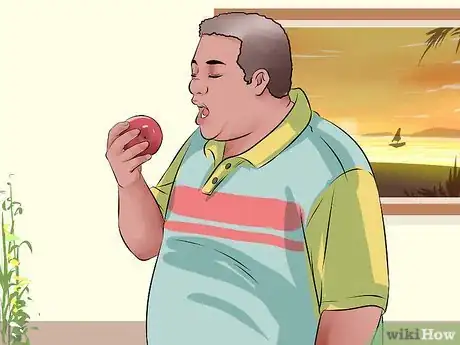
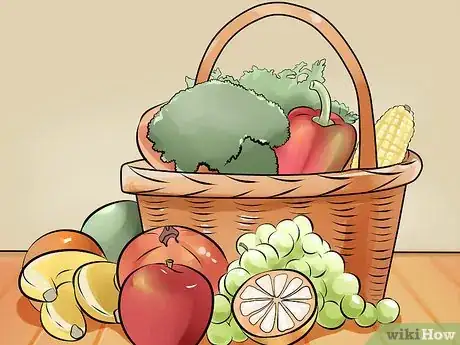
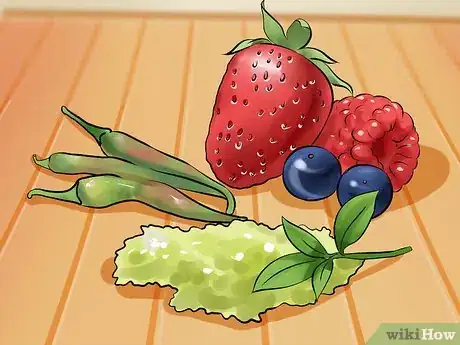
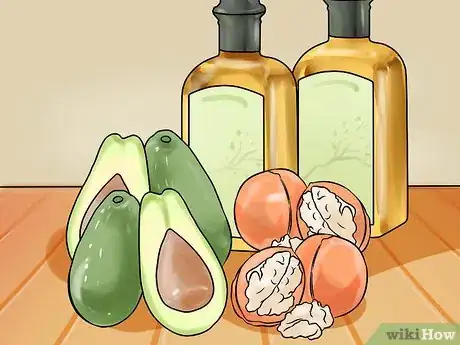
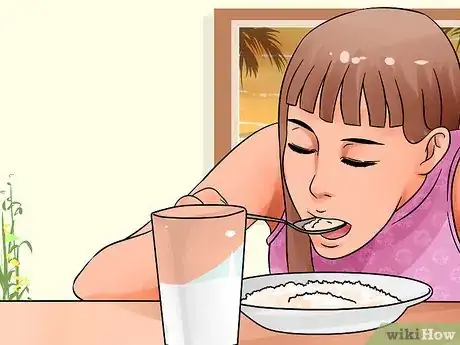
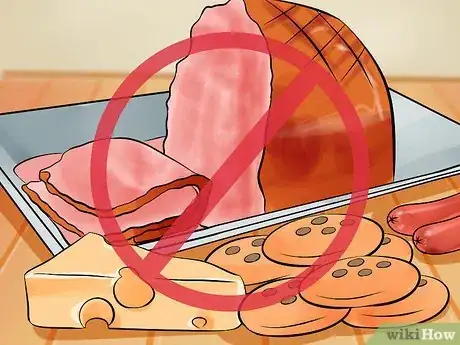
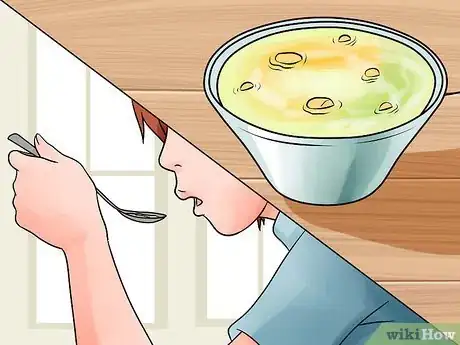

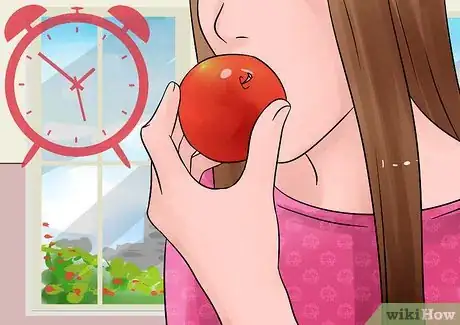
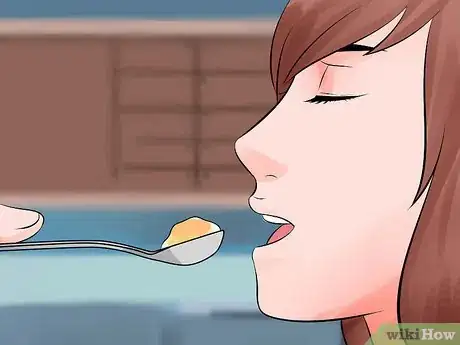
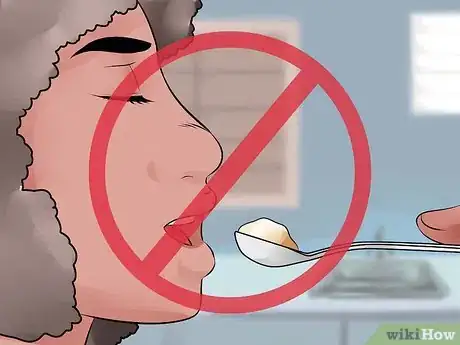


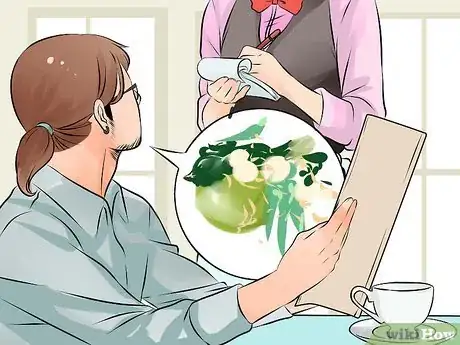
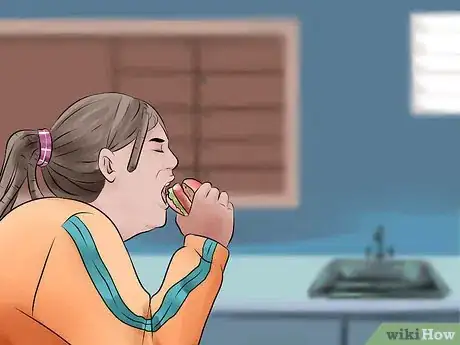

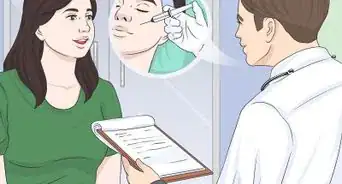

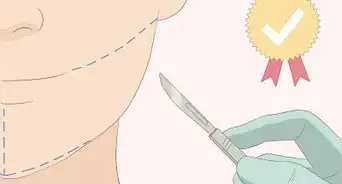
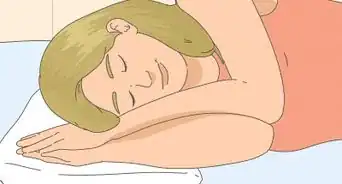



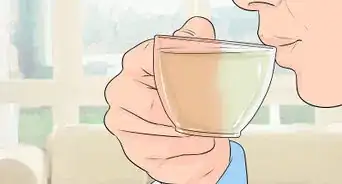

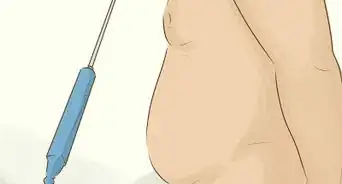

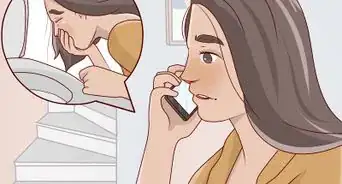
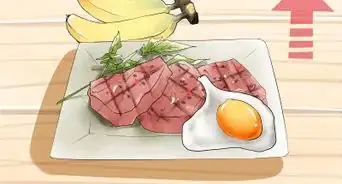









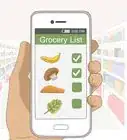


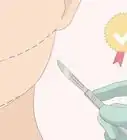



































Medical Disclaimer
The content of this article is not intended to be a substitute for professional medical advice, examination, diagnosis, or treatment. You should always contact your doctor or other qualified healthcare professional before starting, changing, or stopping any kind of health treatment.
Read More...